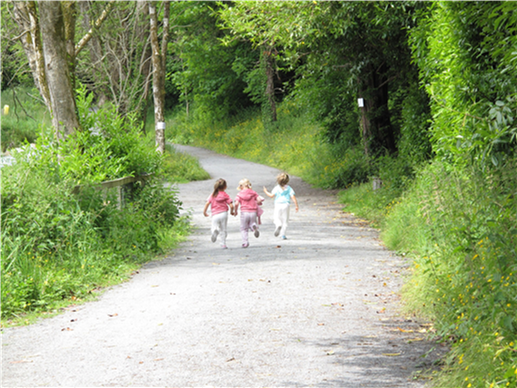Nature-based solutions and protected areas to improve urban biodiversity and health
Biodiversity and healthy natural ecosystems offer a range of benefits to human society, including providing cleaner water, reducing flood risk and storing carbon. They also benefit human health by reducing the incidence of infectious diseases and several other disorders, and by allowing space for physical exercise. These benefits are also provided by ecosystems and protected nature areas in and around cities, providing billions of dollars in cost savings to health services. For example, one in five people in the developing world lack a reliable water supply and water-borne diseases cause millions of deaths each year. Functioning natural ecosystems are an efficient and cost-effective way of supplying clean water; one third of the world’s 100 largest cities rely on forest protected areas for their water supply. Risks of cardiovascular disease are reduced and mental health and children’s cognitive development are improved with access to green space, including in urban areas. Evidence of the reduced costs for health services from these benefits is increasing. An assessment of London’s green spaces found that they saved £370 million per year from improved mental health and £580 million per year due to better physical health.

To enhance the health benefits of urban nature and protected areas, many cities are launching programmes based on the Health Parks, Healthy People model by Parks Victoria, Australia. This Programme involves developing park-based activities for people, building awareness of parks, producing evidence of their benefits and informing cross-sector policies and plans. For example, Parks Canada collaborates with community groups on health initiatives in Rouge National Urban Park, Canada’s first national urban park, including the Mood Walks programme to improve symptoms of anxiety and depression through guided walks in nature. The British Trust for Conservation Volunteers promotes Green Gyms as a way to combine physical exercise with nature conservation action, boosting participants’ mental health, social integration and activity levels. These programmes bring benefits for both the biodiversity of cities and the wellbeing of the people who live in them.
Mobilising new partnerships is key to ensuring these types of programmes are effective, bringing together conservationists, health practitioners, scientists, planners and others in recognition of the health and wellbeing benefits of ecosystems and protected areas. Integrating biodiversity, health and urban policy requires that data from all relevant disciplines are considered in impact assessments and economic evaluations of policy proposals, and enables policy action to meet a wide-range of international commitments, including the Convention on Biological Diversity and the New Urban Agenda.
To read the full story, go to: Nature-Based Solutions and Protected Areas to Improve Urban Biodiversity and Health
Photo: Pixabay/Kramarz
To enhance the health benefits of urban nature and protected areas, many cities are launching programmes based on the Health Parks, Healthy People model by Parks Victoria, Australia. This Programme involves developing park-based activities for people, building awareness of parks, producing evidence of their benefits and informing cross-sector policies and plans. For example, Parks Canada collaborates with community groups on health initiatives in Rouge National Urban Park, Canada’s first national urban park, including the Mood Walks programme to improve symptoms of anxiety and depression through guided walks in nature. The British Trust for Conservation Volunteers promotes Green Gyms as a way to combine physical exercise with nature conservation action, boosting participants’ mental health, social integration and activity levels. These programmes bring benefits for both the biodiversity of cities and the wellbeing of the people who live in them.
Mobilising new partnerships is key to ensuring these types of programmes are effective, bringing together conservationists, health practitioners, scientists, planners and others in recognition of the health and wellbeing benefits of ecosystems and protected areas. Integrating biodiversity, health and urban policy requires that data from all relevant disciplines are considered in impact assessments and economic evaluations of policy proposals, and enables policy action to meet a wide-range of international commitments, including the Convention on Biological Diversity and the New Urban Agenda.
To read the full story, go to: Nature-Based Solutions and Protected Areas to Improve Urban Biodiversity and Health
